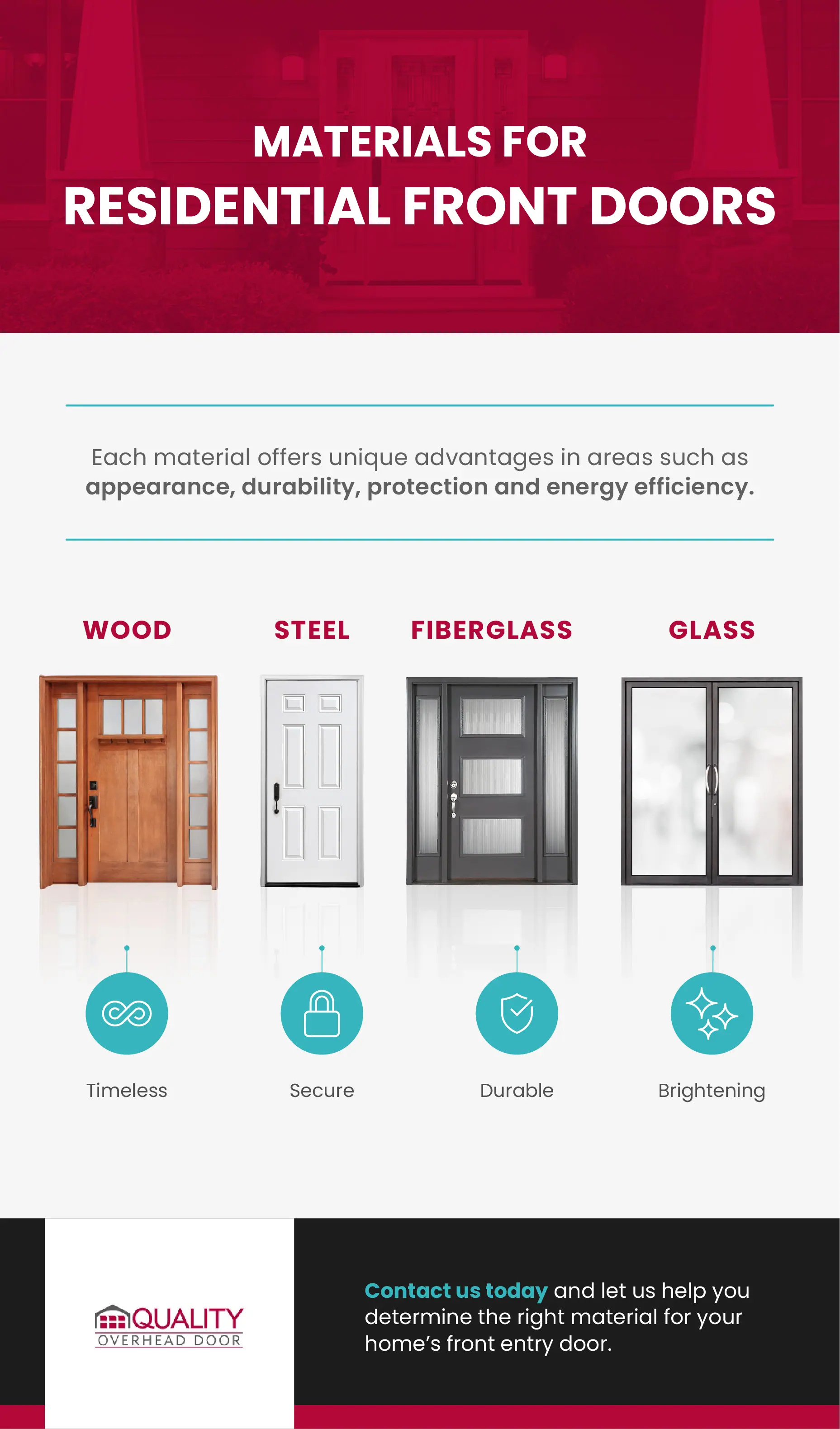Your front door is much more than the point where people enter and exit your residence. A well-constructed door offers the essential security benefit of preventing intruders from getting inside. It can also increase energy efficiency by keeping heated or cooled air in and serving as a barrier against the elements.
From an aesthetic perspective, the front door is one of the first things visitors or passersby notice when looking at your house. Your choice of style and color can either enhance or detract from your home’s appearance. You have a lot of choices to make when you’re selecting a door, and the material you pick can make all the difference.
What Type of Material Is the Best for a Residential Front Door?
These days, most entry doors consist of steel, wood, fiberglass or glass. Each type offers various advantages and disadvantages in areas such as appearance, durability, protection and energy efficiency that can influence your decision.
Wood
Wood is the most common front door material. Wood doors typically consist of hardwoods such as oak, cherry, maple and walnut. They provide a timeless, traditional look that never goes out of style. They’re also easy to personalize by creating custom shapes and sizes and adding accents. On the downside, wood doors can be expensive. They’re also susceptible to warping and moisture damage.
Steel
Steel is the best material for a front door if security is your top priority. This tough metal is stronger than all other door products. It provides excellent protection against forced entries and is less likely to crack or warp. Many steel doors consist of two outer metal layers with a foam insulation core for increased energy efficiency. One disadvantage of steel is that dents can be difficult to repair, which may mean that you’ll require a complete door replacement sooner than you would otherwise.
Fiberglass
Fiberglass is a good choice for homeowners who prefer the look of wood but want more durability. It’s possible to manufacture fiberglass entry doors with grain patterns that closely resemble traditional wood. You can also paint them any color you want. Fiberglass can be the best entry door material for efficiency, as you can customize the amount of insulation. One disadvantage of fiberglass doors is that the material is difficult to trim, which can make fitting nonstandard doorway sizes a challenge.
Glass
A solid glass door can work well if you live in a warmer climate. This material allows natural light to stream inside, which brightens your home’s interior and promotes visibility. However, glass can permit colder air to enter during the winter, making it one of the least energy-efficient options. It also reduces privacy, as passersby can easily see inside. Durability can also be an issue with many glass door types.
Get Help Choosing the Best Material for Front Entry Doors
If you live in northwestern Ohio or southeastern Michigan, Toledo-based Quality Overhead Door can help you determine the best material for the front entry door at your home. View our front door offerings today, and feel free to contact us for more information or request a quote online.
Additional Resources on Entry Doors:
- How to Choose Front Door Hardware
- Small Home Improvements Pack a Big Punch
- Fiberglass vs Wood Front Doors
- What are the Parts of a Front Door

